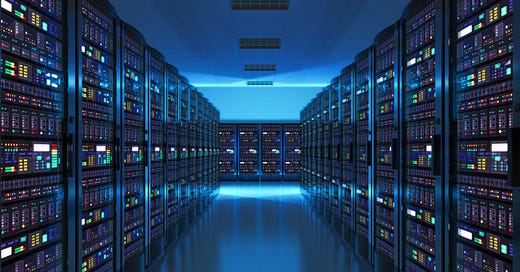Did you know that the training of GPT-4 took 50–62 GWh of energy? That’s the equivalent of the energy consumption of 1,000 average US households over 5–6 years! Moreover, a singular ChatGPT search uses approximately 100 milliliters of water. Since a standard water bottle holds 500 milliliters of water, ChatGPT consumes a water bottle every 5 queries! Large Language Models (LLMs) pose severe environmental challenges as our world is already in short supply of water and electricity. This article will discuss the challenges and solutions LLMs face in terms of sustainability.
Firstly, what is an LLM? A large language model is a type of artificial intelligence that understands and generates text. It’s trained to predict the next word in a sequence, given the words that came before it. LLMs are trained on vast amounts of data such as books, articles, websites, and more to learn the language better. When you send a query to an LLM, the model generates a response based on what it learned during its training. Sometimes, however, models can generate inaccurate information or have biases due to problems in the training data. Engineers are working to improve these problems with newer releases of their models.
Next, let’s talk about the environmental challenges with LLMs. I mentioned this in the introduction, but I will go into greater detail in this paragraph. These challenges can be broken down into 3 broad categories:
Electricity Usage: LLMs use a ton of electricity. A singular ChatGPT question uses approximately 2.9 watt-hours of electricity, while a Google search uses approximately 0.3. With over 10 million queries per day for only ChatGPT, this quickly adds up.
Water Usage: As discussed before, a singular ChatGPT search uses approximately 100 milliliters of water. However, it does not consume the water; the water is used for cooling the chips running inside data centers. The water is taken from local sources such as rivers and lakes and then released at higher temperatures, potentially disrupting local ecosystems.
Hardware: The hardware used to train these models includes large clusters of GPUs, with numbers reaching up to 100,000. This hardware has a fast replacement cycle as newer technology makes the older one obsolete. It is worth considering what needs to be done with the older chips, as electronic waste is not easily recyclable and causes great environmental harm.
So, what can be done to reduce the environmental harm? One major promising idea is to increase model specialization. For example, GPT 4o-mini is significantly cheaper to operate compared to GPT 4o, due to being smaller in size and being more optimized. Next, there is already great progress being made on making AI hardware more energy-efficient and more optimized for AI tasks. Finally, using electricity from renewable sources is a sustainable way to run LLMs. Many companies have been buying nuclear power plants due to their continuous supply of clean power. The more we can shift as a whole towards cleaner energy, the better it is.
AI comes with great challenges but also has great potential for doing good in our society. We are already witnessing some of the great achievements being made with AI, such as advancements in Healthcare (diagnosing and imaging, discovering medicine), Transportation (adjusting traffic lights to make them more efficient), Finance (fraud detection), and much more. This technology is in its early stages but has amazing potential, so long that it can be used in a sustainable way.





Great job again explaining complex technology in layman’s terms. Also, impressed with you prioritizing topics around climate change and sustainability.